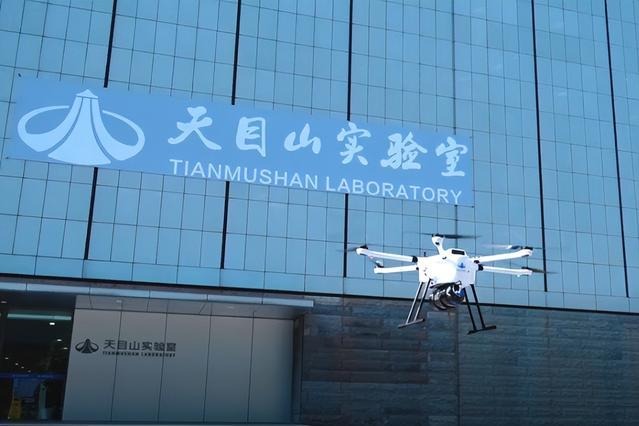Exports to stay steady this year

Experts, officials confident that goal of 8 percent annual growth will be achieved
China's foreign trade may manage to reach the 8 percent growth target in 2013 despite an unexpected decrease in exports in September, experts say.
In the January-September period, China's overall trade rose 7.7 percent from a year earlier to $3.06 trillion, compared with an 8.6 percent growth in the first half of this year. Exports in the first nine months went up 8 percent, while imports rose 7.3 percent, said the General Administration of Customs.
Meanwhile, mounting pressure is envisioned in the fourth quarter of this year to burden businesses in the world's largest exporter, while more reforms are being urged to reduce trade costs and optimize structures, which are of great significance in the long term.
"China is likely to secure 8 percent trade growth this year because demand from developed economies significantly improved from last year, which is a very important change," says Song Hong, an economist at the Institute of World Economics and Politics of the Chinese Academy of Social Sciences.
Song adds that the coming months will see steady growth in China's foreign trade because the last quarter usually sees an increase in China's exports during Western holidays such as Christmas, while foreign trade enterprises seek shipments before the year ends. Meanwhile, the country's imports will keep outpacing exports in the coming months owing to improving domestic demand.
Zhang Xiaoji, director-general of the foreign economic relations department at the Development Research Center of the State Council, echoes the view that China's foreign trade will grow around 8 percent in 2013, about the same rate as last year.
Earlier this year, the new leadership outlined an 8 percent trade growth target for 2013 after 6.2 percent growth in 2012 trailed a 10 percent target.
China's exports and imports tumbled in the May-June period as the regulatory authorities in late April targeted hot money inflows disguised as trade invoices and inflated trade data in the previous months. The central government in July introduced trade facilitation measures, including simplifying clearance through customs, cutting administrative fees and increasing financial aid, which boosted the weak trade in the following months.
Unexpectedly, exports in September declined 0.3 percent year-on-year from the 7.2 percent gain in August mainly owing to holiday distortion, the high base figure of last year as well as weakened demand in emerging markets, experts said.
Commerce Ministry spokesman Shen Danyang said on Oct 17 that the country could achieve its trade growth and transformation targets with "hard work" because exports will edge up in the coming two to three months while imports will significantly grow amid the recent pickup in China's economy.
Tough outlook
Chen Hufei, a researcher at Bank of Communications Ltd, says that an 8.9 percent or above export growth in the fourth quarter is needed to secure the whole year's 8 percent overall trade growth target, while high trade value in the fourth quarter of last year increased the challenge.
"China's yuan is expected to further appreciate in the near future and is likely to outpace export growth," Chen says.
The Chinese currency has experienced several rounds of appreciation this year after the United States Federal Reserve's bond purchases pushed down the value of the dollar and led investors to spend capital in emerging markets, such as China, for higher returns. A stronger yuan hurts China's exports because it makes Chinese products more expensive abroad in dollar terms.
"What we should really worry about is the risk that speculative funds - hot money - is clearly flowing into China through trade accounts, which will inflate trade figures, as it did earlier this year," Chen says.
Wang Jianjun, a manager of Shandong Machinery I/E Group, said during the 114th session of Canton Fair, China's export barometer, that overseas orders of large value or lasting more than six months have "become much fewer now".
"All the orders now are smaller and for shorter terms because exchange rates and raw prices are fluctuating and dealers are choosing to breach contracts to avoid risks when the fluctuations are too big," Wang said.
Peng Wensheng, chief economist at China International Capital Corp, an investment banking group, said in a research note that while imports will grow steadily in the fourth quarter of this year, exports will remain sluggish in the coming months owing to currency appreciation, weak demand in developed economies undergoing recovery as well as increased uncertainties of growth in emerging economies. China's exports to the US will probably decrease in October because of the temporary government shutdown while exports in December will see little growth compared with last December's values, which were the largest in 2012.
Shen, the spokesman, said on Oct 17 that the external environment for China's foreign trade remains "challenging and complex" owing to lackluster demand from emerging economies which saw capital outflows, currency depreciation, worsened inflation and growth slowdown. Meanwhile, rising costs at home, including appreciation of the yuan and higher labor wages, continue to burden China's trade enterprises.
Zhang from the Development Research Center of the State Council says that the 8 percent growth target of China's foreign trade serves as a guide rather than a mandatory goal.
"It is of more significance to emphasize the improvement in trade structure than eyeing the speed of growth and the target, which is short-sighted," Zhang says.
Shen said that China's foreign trade demonstrated three characteristics in the first nine months of this year: reduced dependence on the markets of the US, the European Union and Japan, a reduced share of processing trade value in overall trade and the increased role of private businesses.
Between January and September, the processing trade, accounting for 32.3 percent of overall trade, edged up 0.7 percent from a year earlier while general trade, which measures higher value-added elements and the country's trade independence, rose 7.8 percent year-on-year and accounted for 52.8 percent of the total trade value in the same period, according to the General Administration of Customs.
Meanwhile, China's processing trade is also shifting from assembling to higher rungs in the value chain, such as research and development, design and brand building, says customs agency spokesman Zheng Yuesheng.
In addition, the exports of primary products increased 6.4 percent year-on-year in the first nine months, much lower than the 8 percent export growth in the same period, while China's improvement in manufacturing reduced the imports of high-tech products and the country even sold some high-end products, such as auto parts, abroad, Zheng says.
"China's trade is moving toward a good direction in view of the optimization of markets and increased value-added in exports," Zhang says.
lijiabao@chinadaily.com.cn
| Dockworkers load goods onto a ship at Lianyungang port in Jiangsu province. Provided to China Daily |

(China Daily Africa Weekly 11/08/2013 page21)
Today's Top News
- Evidence mounts of Japan's wartime atrocities
- Gunmen kill 11, wound many on Sydney beach
- Study finds Earth's deep water reservoirs
- China remembers victims of Nanjing Massacre 88 years on
- Philippines' provocations will avail it nothing: China Daily editorial
- China steps up financial support to spur consumption































